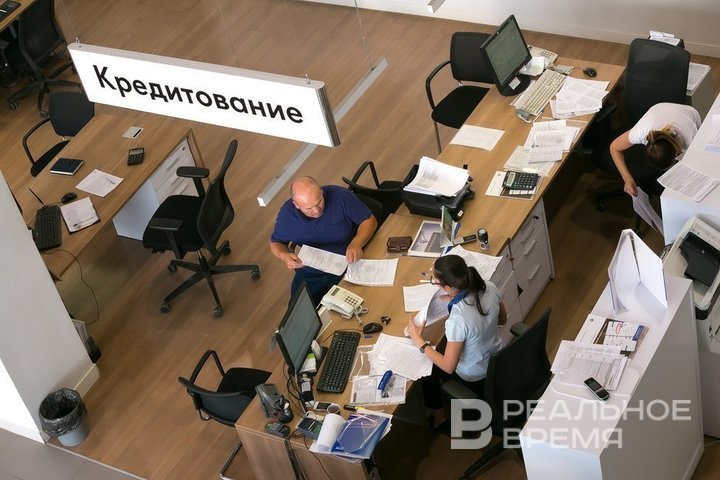The debt burden of businesses in Tatarstan reaches 1.3 trillion rubles
Experts believe that the accelerated growth of debts against the backdrop of a decrease in the issuance of loans threatens the financial stability of the republic

The debt of companies and entrepreneurs in Tatarstan to banks has reached 1.3 trillion rubles, increasing by 23.5% over the year — this exceeds the growth rate of the debt burden of businesses in the Volga region and Russia as a whole. Manufacturing and construction are in the lead in terms of debt. At the same time, the issuance of loans is decreasing, and delinquencies are growing signalling financial risks, the Central Bank warns.
Entrepreneurs have taken out loans for 1.3 trillion rubles
In Russia, the share of overdue debts of small and medium-sized businesses is growing, as is the number of requests for loan restructuring in this segment. Small businesses are going through difficult times — banks have become more picky in assessing their solvency, and the volume of preferential programs has decreased. Experts have identified car dealers and freight forwarders as the industries experiencing the most serious problems, although it has become more difficult for representatives of many other industries.
Since the beginning of the year, Tatarstan's business has demonstrated an unprecedented increase in debt burden. According to the regulator, by May the total debt volume of legal entities and entrepreneurs reached 1.3 million rubles, which is 23.5% higher than a year earlier (1.05 million) and almost one and a half times higher than the average Russian dynamics (+ 15%).

The monthly breakdown shows a systematic accumulation of liabilities with an average quarterly growth of 7.8%, which reflects not a short-term surge, but a systematic increase in debt.
More debt than its neighbours in the Volga Federal District
Against the background of all-Russian indicators, Tatarstan is confidently ahead of its neighboring regions of the Volga region: in Bashkiria, the debt increased from 0.9 to 0.95 trillion rubles (+5.6%), in the Samara region — from 0.8 to 0.85 trillion (+6.25%), in the Nizhny Novgorod region — from 0.85 to 0.91 trillion (+7.1%). The gap in growth rates between the republic and its neighbors today is 16–18 percentage points, which indicates specific drivers of the region's debt growth.
The most rapid growth is associated with foreign currency liabilities. Over the year, from May to May, Tatarstan's foreign currency portfolio doubled: it grew from 645 million to 1.46 billion rubles (+126.7%), while in Bashkiria and the Samara region the growth was 100%, and in the Nizhny Novgorod region — 83.3%. Despite the fact that ruble loans still form 98% of the total debt, a sharp surge in currency positions creates additional vulnerability in the event of a possible strengthening of the dollar and the euro.
The sectoral structure of Tatarstan's debt demonstrates the dominance of industry: manufacturing enterprises have accumulated 619 billion rubles. In second place is the real estate sector with a debt of 201 billion, in third place is the construction industry — 199 billion. Trade and agriculture are holding at 99 billion and 80 billion, respectively.
For comparison: the industrial debt of Bashkiria is 400 billion (+60%), Samara region — 350 billion (+77.8%), Nizhny Novgorod region — 380 billion (+64.7%). Real estate debt in Tatarstan is one and a half times higher than in Samara (130 billion) and Bashkiria (150 billion), and construction obligations exceed the Samara indicator by 59 billion.
In 2024, the volume of loans issued to legal entities in Tatarstan demonstrated pronounced seasonality: the minimum in January was 94 billion, the maximum was in July — 191 billion, and by the end of the year they were adjusted to 81 billion in December. In January-May 2025, the average volume of issuance fell to 22 billion, which is 4-5 times lower than the average figures for the same period last year — 123 billion. The maximum demand for new loans occurred in February (24 billion), after which banks sharply reduced lending: March — 24 billion, April — 23 billion, May — 22 billion.
Overdue payments increased by a third
Rates on new ruble loans for enterprises in Tatarstan in the first half of the year increased by 1.2 percentage points, to an average monthly 9.8%, which is due to the high debt burden of clients and the increased level of defaults. This confirms the banks' caution: in May 2025, large lenders preferred to direct resources to safer sectors — real estate (2.3 billion), transport and communications (1.4 billion) and agriculture (1.3 billion), leaving only 0.6 billion rubles for industry.

The quality of the debt portfolio is rapidly deteriorating: the republic's overdue debt has grown by 33% over the year — from 29 to 38 billion rubles. In industry, the indicator increased by 1,170% — from 1.2 to 16 billion (or 2.5% of the sector's total debt), in trade — by 76% (up to 4 billion), in agriculture — by 74% (up to 3.5 billion), in non-state real estate transactions — by 64% (up to 5.7 billion), in construction — by 73% (up to 7.9 billion).
The structure of debt by terms in Tatarstan shows a uniform renewal of the portfolio: short-term loans (up to a year) grew by 24% to 245 billion, medium-term (1–3 years) — by 24% to 568 billion, long-term (>3 years) — by 22% to 486 billion rubles. This suggests that businesses accumulate both short-term and long-term liabilities, without relying on a single type of capital. As of May 2025, the share of Tatarstan's debt in the all-Russian portfolio amounted to 2.6% of 50 trillion rubles (leading roles: Moscow — 24%, Moscow Region — 12%, Tatarstan — 2.6%). For comparison, Bashkiria occupies 1.9%, Samara and Nizhny Novgorod regions — 1.7-1.8% each.